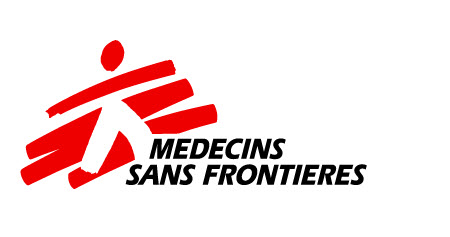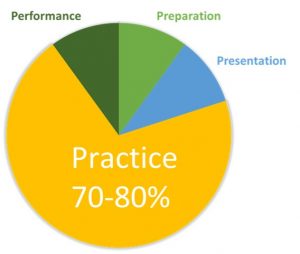
Looking At Live Virtual Training Differently
Starting on Tuesday, 2 September 2025
Welcome Lin-Thu
 To help keep everything together in one place, I've created this webpage. Towards the bottom is a 'tabbed' area - one per module. This will have the times and link to the training as well as a placemat (handout) for each module. I'll then add follow-up resources after each module.
To help keep everything together in one place, I've created this webpage. Towards the bottom is a 'tabbed' area - one per module. This will have the times and link to the training as well as a placemat (handout) for each module. I'll then add follow-up resources after each module.
Training Structure
Your workshop is made up of 6 episodes, each one looking at a different part of live virtual training design and facilitation.
We'll be using MS Teams for your workshop and as part of your training, we will look at how best to use the platform for your own training.
This is not a sit back and watch type of training - it's a roll up your sleeves and get designing workshop. I'd like you to start the development of a new budgeting tool that you need to create. You can apply ideas and techniques to that workshop as we go, so that your workshop will be complete by the end of our time together (or well on the way to completion). Can I also ask you to keep your webcams on throughout your training and continually participate. Don't worry, I'll never put you on the spot or ask you something without giving time prior to consider you possible response.
Scheduling Your Remaining Dates
Click the link below to schedule your remaining dates using my virtual calendar. I'll then send you the MS Teams meeting link:
www.eureka-tp.com/meeting
 Episode 1
Episode 1
Using MS Teams As A Virtual Training Room
Date - Tuesday, 2 Spetmeber 2025
Start time - 10:00 CET
Duration - 90 Minutes
With MS Teams you have all the tools you need to help make your training fully participatory keeping your learners totally engaged from the start to the end of their training - but how?
What you'll need to have with you for this episode
- Nothing 😀
Follow-up Resources
- Click here for a recording within the Community on how to use the Whiteboard in Teams.
- Click here for a recording within the Community on adding Cameo (your video feed) to your PowerPoint Slides.
 Episode 2
Episode 2
Separating The Need-To-Know Content From The Nice-To-Know Content
Date - Friday 5 September 2025
Start time - 1400 CET
Duration - 90 Minutes
This episode will take you along the path of being able to decide what training can and cannot help achieve and from that, whether training is really the solution to what you (and the organisation) currently see as a performance gap – because training is not the solution to everything.
If training is going to be the solution, then you’ll write the aim of the training. With that aim in mind, we’ll then use a matrix to select the key content that the business needs your learners to start using that they are not using now.
What you'll need to have with you for this episode
- Click here to download your episode placemat (handout)
- Click here to download your blank Priority Matrix template
Your Task
- Create an attention-grabbing title for your training.
- Analyse the overall content of your training and identify the key content ie those high-scoring priority pieces of content.
Follow-up Resources
- Below is the link to the 'Is Training The Answer' module within the Community Roadmap:
https://eureka-tp.com/lessons/is-training-the-answer/ - Below is the link to the Priority Matrix module within the Community Roadmap:
https://eureka-tp.com/lessons/how-to-separate-the-need-to-know-content-from-the-nice-to-know-content/
Additional Resources (within the Community)
- How To Use ChatGPT To Help You Design And Facilitate Training
https://eureka-tp.com/etc/devmods/chatgpt/ - How To Create Job Aids That Support Learners In The Workplace
https://eureka-tp.com/etc/devmods/jobaids/
 Episode 3
Episode 3
How To Write Behavioural Based Objective
Date - TBC
Start time - TBC
Duration - 90 Minutes
Now that you've identified the key content for your training it’s time to write the objective for each of those pieces of content. These need to be Observable and Measurable. But how?
What you'll need to have with you for this episode
- Click here to download your episode placemat (handout).
Your Task(s)
- These will be added following your live module.
Follow-up Resources
- These will be added following your live module.
 Episode 4
Episode 4
The Learning Cycle
Date - TBC
Start time - TBC
Duration - 90 Minutes
Let's look at converting those objectives into Learner Centred training modules. Using the Learning Cycle gives you a structure to follow for any transfer method you're using ie Digital Lesson, eLearning, Live Virtual Training, Face-to-Face.
What you'll need to have with you for this episode
Click here to download your episode placemat (handout)
Your Task(s)
- These will be added following your live module.
Follow-up Resources
- These will be added following your live module.
Episode 5
Live Virtual Training - Adding Interaction and Collaboration
Date - TBC
Start time - TBC
Duration - 90 Minutes
When we design Live Virtual Training, we should 'add' interaction, but 'design for collaboration'.
Leave with practical activities for encouraging interaction and some great collaborative ideas and activities that you can use for your very next live virtual training.
What you'll need to have with you for this episode
- Click here to download your episode placemat (handout)
Your Task(s)
- These will be added following your live module.
Follow-up Resources
- These will be added following your live module.
Episode 6
Live Virtual Training - Priming, Opening and Close
Date - TBC
Start time - TBC
Duration - 90 Minutes
Take away:
- Techniques for helping increase learner content retention by up to 34%.
- Learner centred opening activities that engage your learners from the moment their live training starts.
- Closing techniques that bring everything together and encourage learners to create an action list of new techniques to apply back in the workplace.
What you'll need to have with you for this episode
- Click here to download your episode placemat (handout)

 Episode 2
Episode 2 Episode 3
Episode 3 Episode 4
Episode 4
